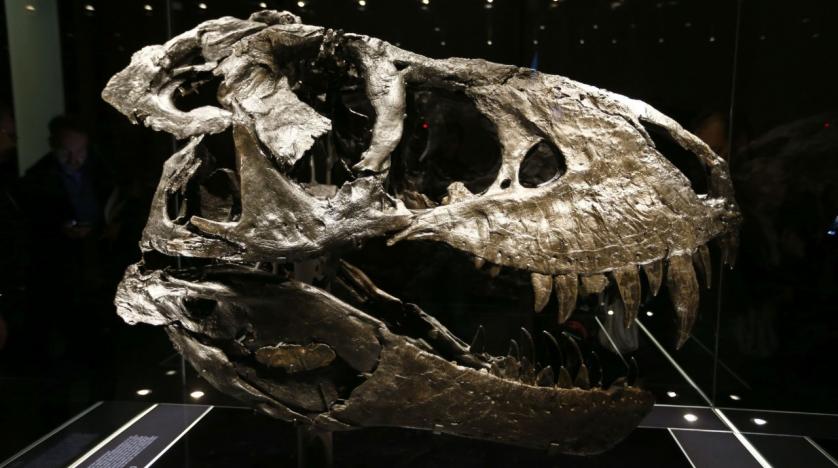
Asharq Al-Awsat
Paleontologists at St. Petersburg University in Russia created the most detailed virtual 3D-model of the endocranial cast and blood vessels in the skull of the ankylosaur Bissektipelta archibaldi. It was an herbivorous dinosaur somewhat similar in appearance to a modern armadillo, which currently exist in Southern United States, central and southern America, and Uruguay.
Ankylosaurs appeared on Earth in the middle of the Jurassic, about 160 million years ago, and existed until the end of the dinosaur era, which ended 65 million years ago. Although these fossils have been known for 20 years, and uniquely-preserved in Uzbekistan, paleontologists from St. Petersburg University managed to create the first virtual 3D-model of the endocranial cast of an ankylosaurian. This model enabled them to prove that dinosaurs of this species were capable of cooling their brains, had an extremely developed sense of smell, and heard low-frequency sounds. However, their brain was one and a half times smaller than that of modern animals of the same size.
During the study, the paleontologists examined three fragments of fossil skulls of the ankylosaur Bissektipelta archibaldi, which were found during a series of international expeditions URBAC (Uzbek / Russian / British / American / Canadian Joint Paleontological Expeditions) in the late 1990s and early 2000s in the Central Kyzylkum Desert, Uzbekistan. The study was published in the recent issue of the Biological Communications journal.
A 3D reconstruction of the endocast of its brain cavity was made using CT. It is necessary to study it carefully to understand how big the actual brain was, where its parts were, and how the vessels and nerves were housed. According to a report published on the university's website, after meticulous work that lasted for three years, the scientists found out that a considerable part of the brain of Bissektipelta archibaldi was occupied by olfactory bulbs, neural structure in the brain involved in the sense of smell (represents about 60% of the size of the cerebral hemispheres). Bissektipelta could boast of an extremely developed sense of smell, which probably helped it to look for food, relatives of the opposite sex, and to feel the approach of predators in time.
Co-author Ivan Kuzmin said in the report: "Another interesting skill of the ankylosaur that we learned about is the ability to cool its brains. The network of veins and arteries in its braincase turned out to be very complicated: they did not go in a single direction, but constantly communicated with each other, like a system of railway tracks. The blood could have flown in different directions."
Latest News
-
 Trump says 'hell to pay' if Hamas fails to disarm in short period
Trump says 'hell to pay' if Hamas fails to disarm in short period
-
 Somali President to Visit Türkiye After Israeli Recognition of Somaliland
Somali President to Visit Türkiye After Israeli Recognition of Somaliland
-
 Syrian Army Enters Latakia, Tartus after Attacks by Regime Remnants
Syrian Army Enters Latakia, Tartus after Attacks by Regime Remnants
-
 Jordan, Arab, Islamic countries reject Israel’s recognition of Somaliland
Jordan, Arab, Islamic countries reject Israel’s recognition of Somaliland
-
 Trump Says Had 'Productive' Call with Putin Ahead of Zelensky Meeting
Trump Says Had 'Productive' Call with Putin Ahead of Zelensky Meeting